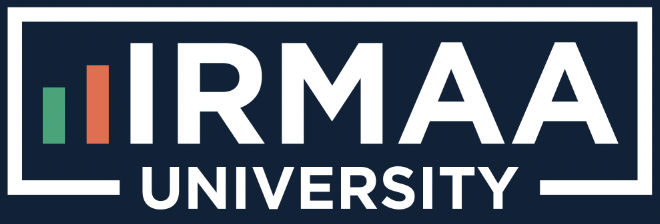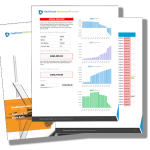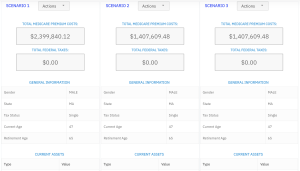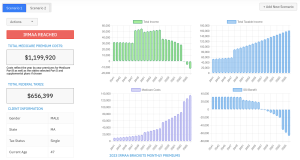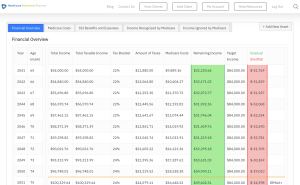More and more retirees who are enrolled in Medicare are finding out the hard way that their income is leading to much higher premiums and much lower Social Security benefits.
They have reached this little unknown tax in retirement called IRMAA and now they want to know how to avoid it.
Thankfully, avoiding IRMAA is not an overly complex or even strenuous process, but the simplest way to learn to avoid IRMAA is to understand what it is, who it is for and how someone reaches it in the first place.
After this point avoiding IRMAA is extremely simple in theory, but as you will see extremely difficult to do under current financial planning mantras.
IRMAA, which is short for Medicare’s Income Related Monthly Adjustment Amount, is, simply, a tax on income through that federal government program.
The Federal Code of Regulations defines IRMAA more eloquently as it states that it is:
Basically, the more money you have that the Internal Revenue Service can see and tax the more you will pay for your Medicare coverage after certain thresholds.
This should not come as a surprise as IRMAA only impacts those who are enrolled into Medicare, but in order to be impacted by IRMAA you must be enrolled specific types of Medicare coverage. If you are enrolled into Medicare Part B or have a Medicare Advantage Plan or/and a prescription drug plan, then you can be subject to IRMAA if your income is too high in a given year.
Medicare’s IRMAA is not for subject to Medicare’s Part A coverage or even Supplemental Coverage (Medigap Plans).
According to Social Security’s Program Operations Manual System (POMs) IRMAA is for Medicare beneficiaries enrolled in:
- Medicare Part B,
- Medicare Part B and a Medicare Advantage Plan (MA),
- Medicare Part B and a Medicare Advantage Plan with prescription drug coverage (MA-PD),
- Medicare Part B and a Medicare prescription drug plan (PDP), or
- A Medicare prescription drug plan (PD) AND
- Have modified adjusted gross income (MAGI) above certain thresholds.
Every year, about 2 months prior to the upcoming new year, the Social Security Administration will send your Social Security Number as well as a request of your income information from the IRS to determine if you reached IRMAA.
The IRS, once the request from the SSA is received, will look at your tax-return from the prior 2 years. If your income has reached an IRMAA threshold the IRS will send back that information along with your SSN. If you have not reached an IRMAA threshold the IRS will send back only your SSN to the SSA.
Once the SSA receives income information back from the IRS they will mail out notifications as soon as possible.
The notifications will inform the Medicare beneficiary that the decision is still subject to review and can be reversed by “qualifying circumstances”, if provided.
At this point anyone who has received this notification has 60 days from the received date to file an appeal to contest the ruling. If not appeal is made there will be at least 2 more notifications explaining what will happen in terms of higher Medicare premiums and lower Social Security benefits.
For those who are new to Medicare in a given year the process is similar, with the exception that the SSA, once you apply for benefits for the first time the SSA will request your income information from the IRS.
- This process includes every single person who is enrolled into Medicare with the exception of those are receiving:
- Financial help to afford their Medicare costs in any.
- Supplementary Security Income (SSI).
In 2022, with the upcoming year of 2023 the SSA will, at the end of October, send your Social Security Number to the IRS electronically and request your income information.
The IRS, since you have not submitted your 2022 tax-return yet, will look at your tax-return from 2021 to see if you have in fact reached an IRMAA threshold.
If you did reach a threshold the IRS will send back that income information along with your SSN. If you did not reach a threshold only your SSN will be sent back.
